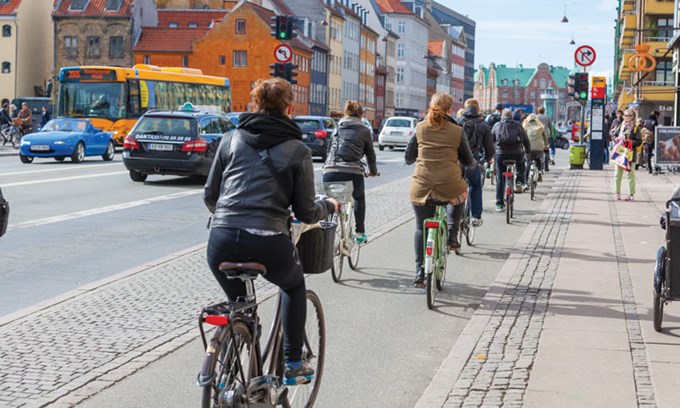What sort of place would you like to live in?
Hamish Mackie, Director Mackie Research
What sort of place would you like to live in? More like Los Angeles or more like Copenhagen?
There are not too many cities trying to copy LA – where its design has led to air pollution, congestion, endless sprawl, and poor human health. Meanwhile, in Copenhagen, the city has been re-designed to make it more user-friendly for a range of road users. Interestingly, LA is now working to be more user-friendly.
Of course, Auckland needs to follow its own path, but how should we design it and who are we designing it for? People going to work, school, shops, friends or sport. Young, middle-aged, and old people from a range of suburbs and cultures. How easy is it for them all to get around? We could focus on getting cars around as best we can – fast, lots of parking. It didn’t work for LA, why would this work for Auckland? Or we could focus on a wider range of outcomes – safety, health, prosperity, environmental sustainability, fairness, and just a nice place to live.
In addition to obvious safety benefits following the laws of physics (“faster you go the bigger the mess”), managing traffic speed is a key part of making cities nice. It seems counter-intuitive as faster means you get places quicker right? Well not really.
Lots of research proves that there is a big difference between the perceived vs actual travel time penalty of lower speed limits – we think we save lots of time by driving faster (or waste lots of time if we drive slower). The reality is that the time spent getting the mail from your letterbox is not dissimilar to the travel time difference from lower speeds on a typical city trip.
But how does traffic make a city nice or not? Here’s an example. Over 20-30 years, we’ve pretty much eliminated kids riding bikes to school. The majority of those kids are now being ferried around in private cars (often across town to a chosen school), adding to our traffic woes. When surveys ask parents why they won’t let their child bike to school, traffic and traffic speed are usually cited as the biggest issues. Parents worry about the safety of their children – which is perfectly natural, especially on the streets we have today. This is just one example, but we could also talk about older people trying to cross roads, people choosing to bike to work, or someone just trying to enjoy a drink at a waterfront café.
Lower speeds need to make sense though. The look and feel of a 30 km/h road should feel different to a 50 km/h road. Where there are lots of pedestrians about – village centres, schools, shops etc, slow speeds make sense and the road features should reinforce this. Pedestrian crossings, different road marking, planting, community artwork, people sitting on the street front, are all things that might feel about right for 30 km/h.
In Māngere, better pedestrian crossings, wider footpaths, cycle lanes, planting and cultural artwork on some of the key roads have led to lower traffic speeds and less traffic. People trying to cross roads are finding it much easier, especially those with prams, mobility scooters or in wheelchairs. Some are not so keen about lost parking, but on balance the perception is that Māngere Central is now a nicer place and it’s now easier for a wider range of people to get around.
Trade-offs are inevitable, we need to make decisions about how best to use our road space. But given the challenges the world and Auckland faces, we need to be smarter about speed. What sort of place do you want your children to live in?


